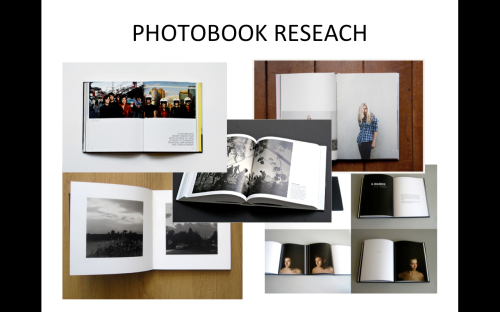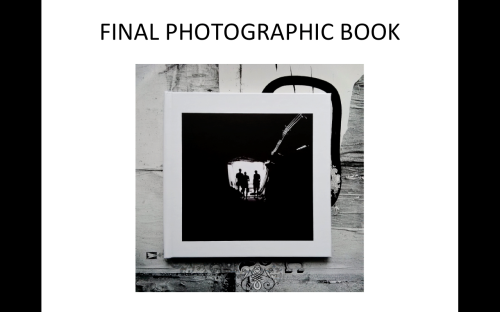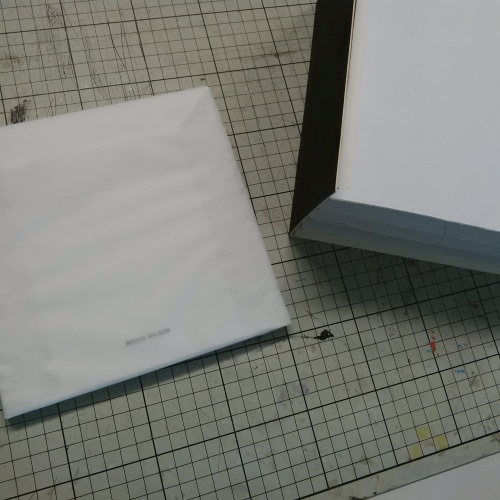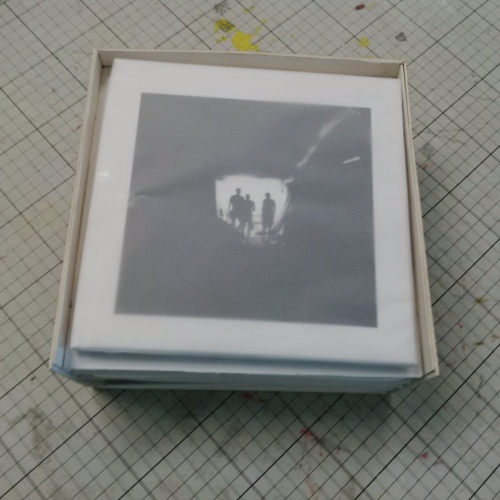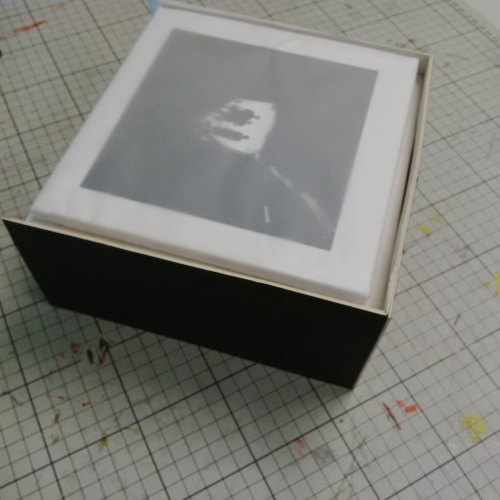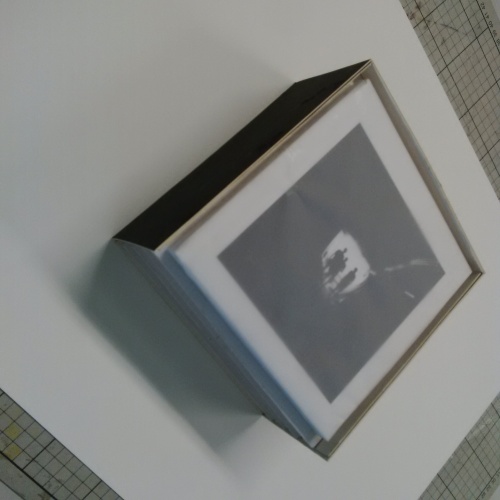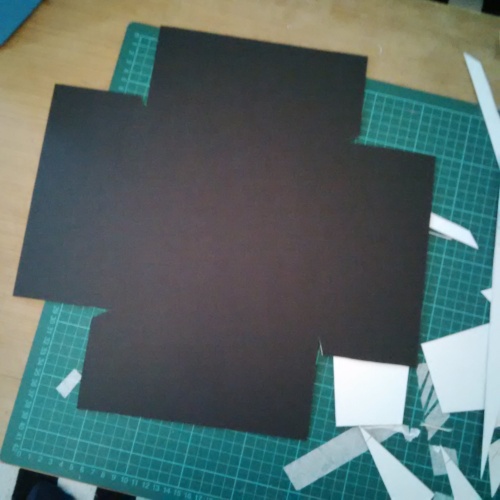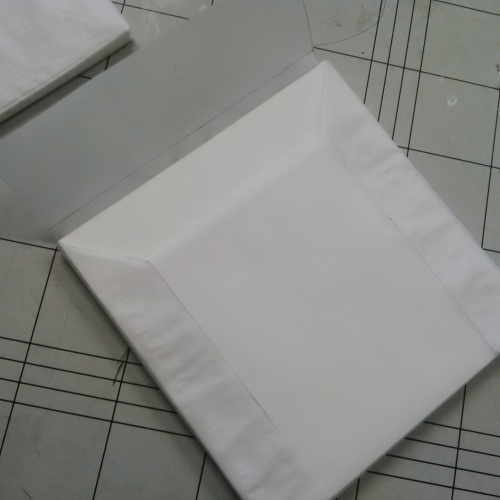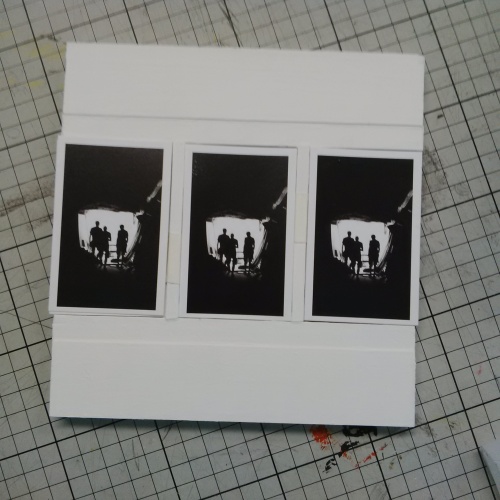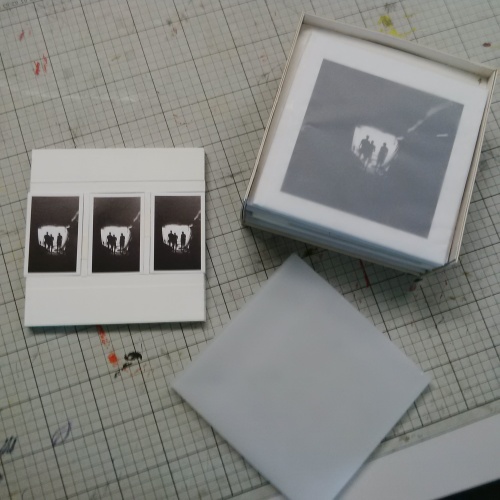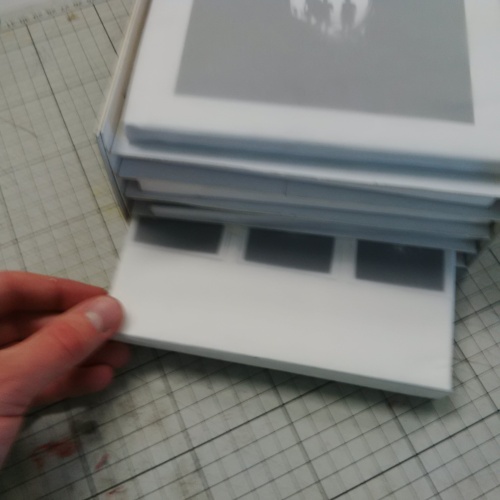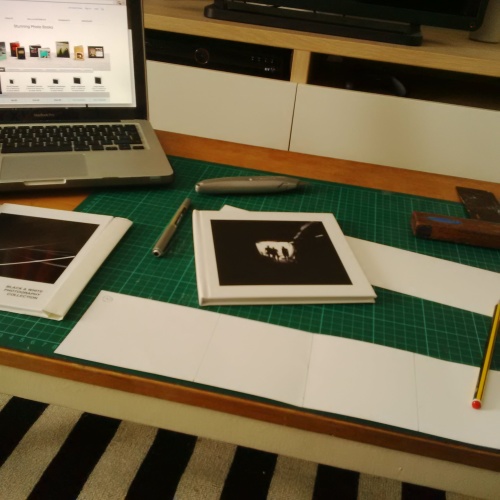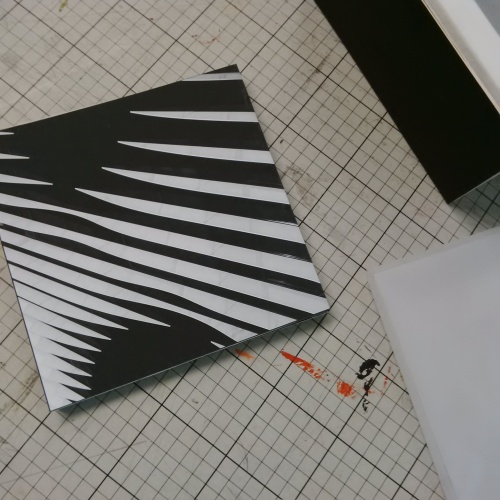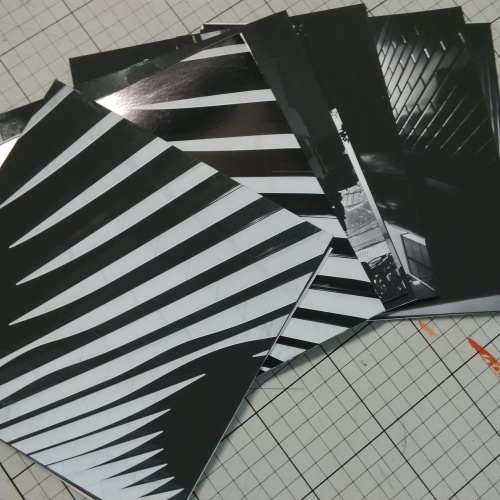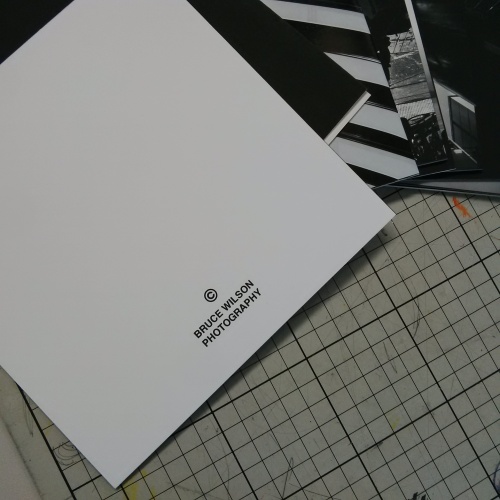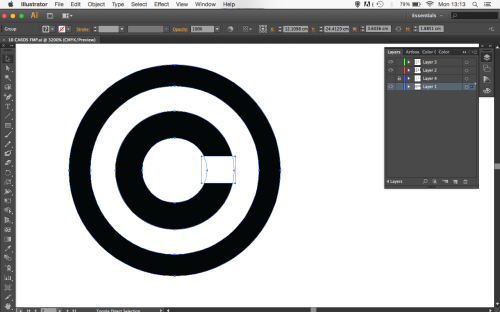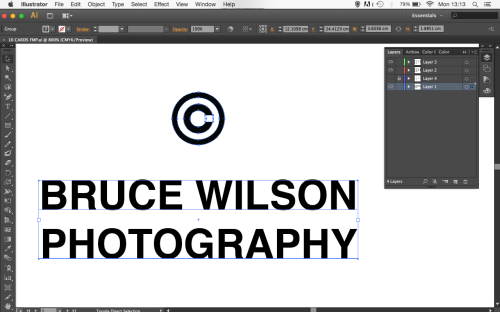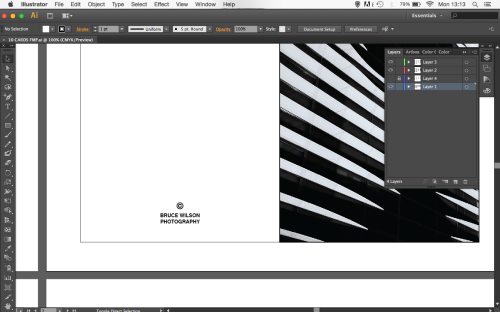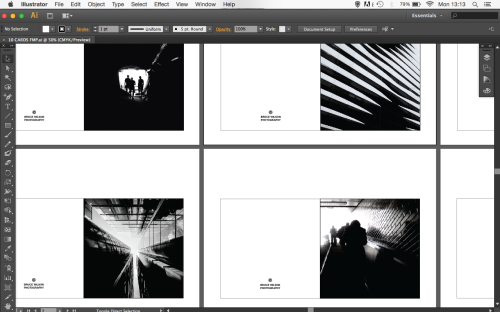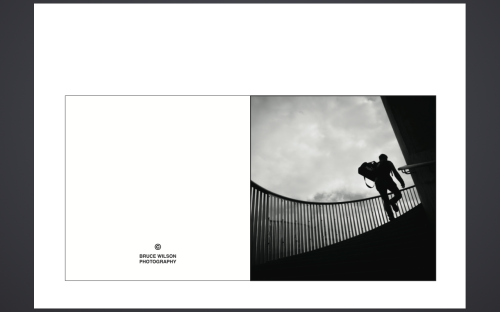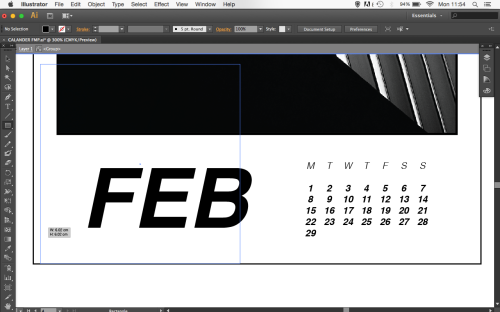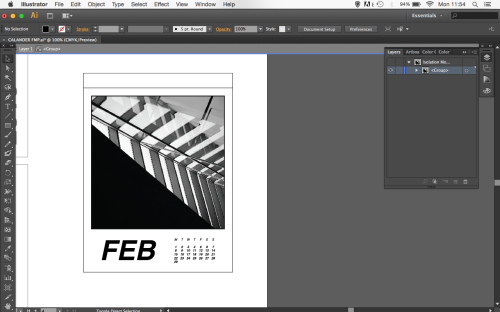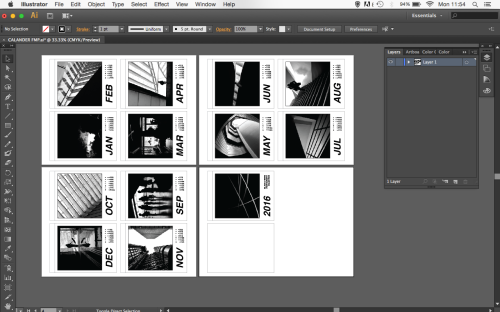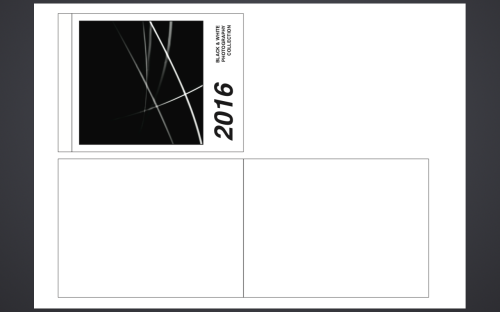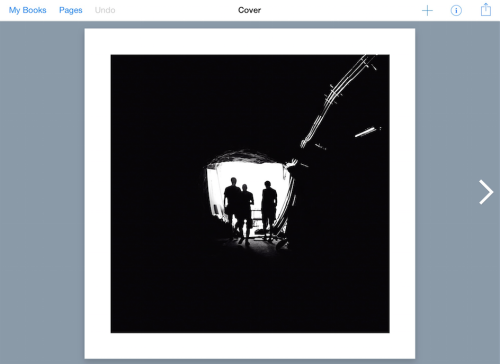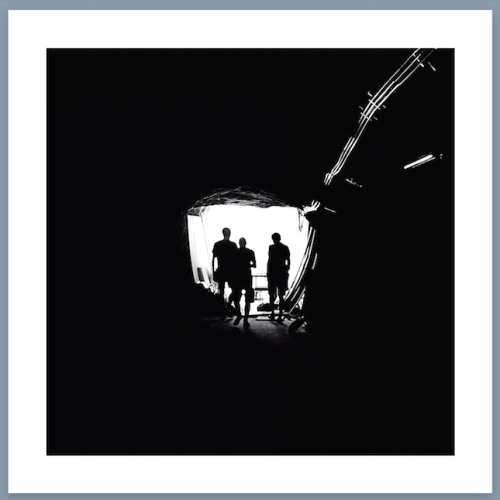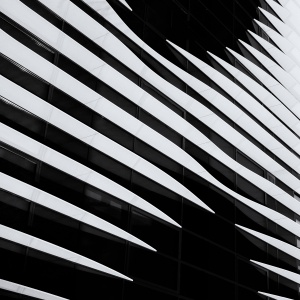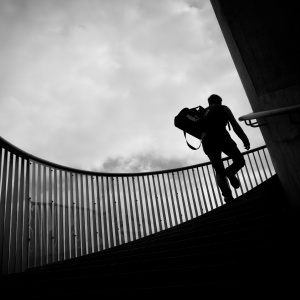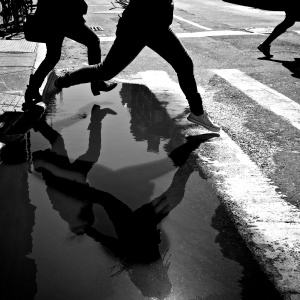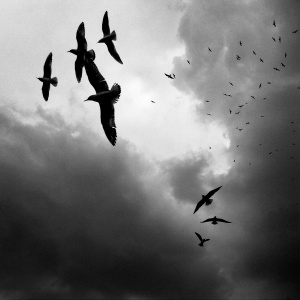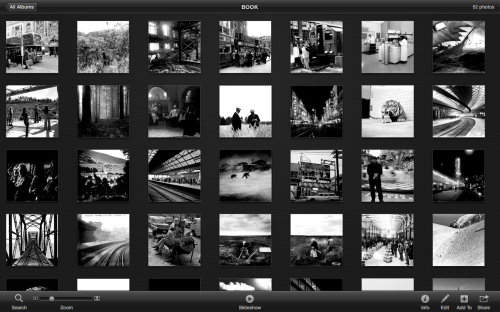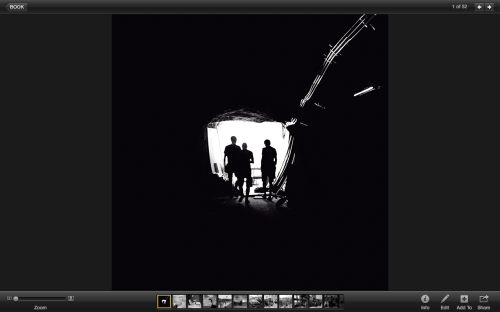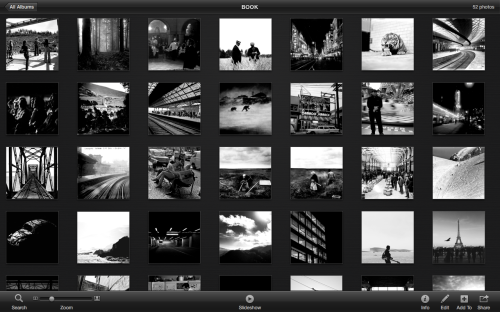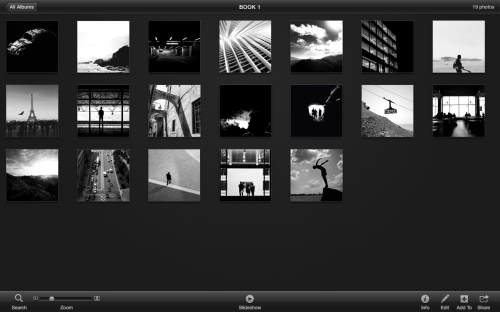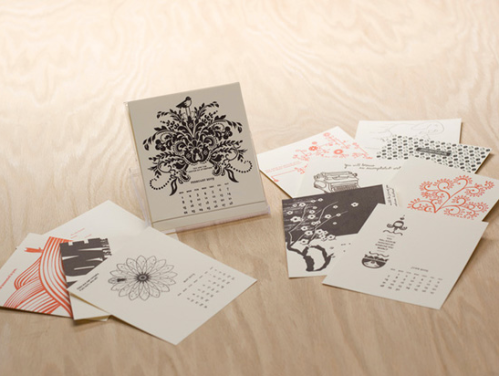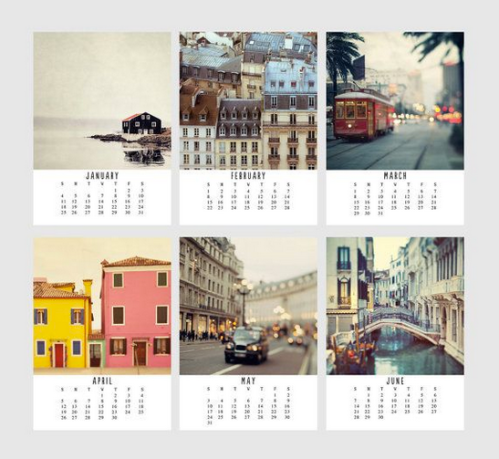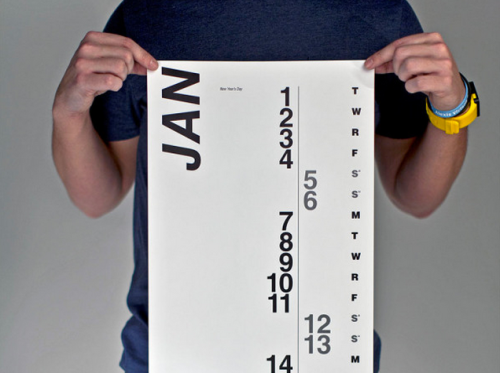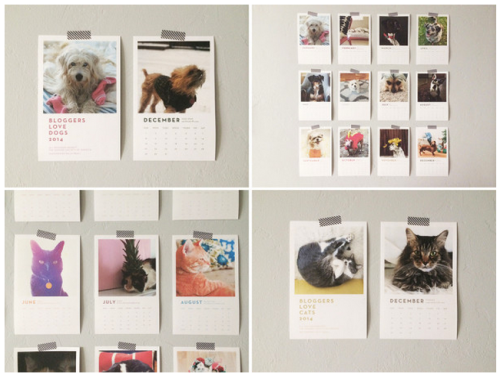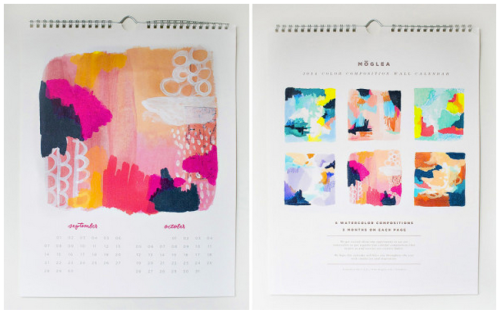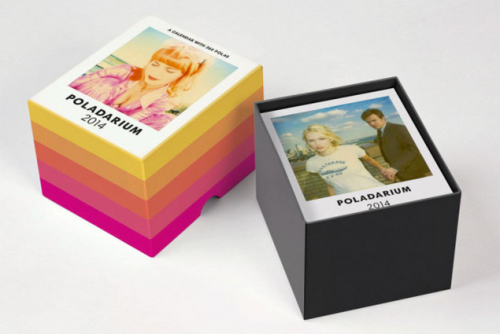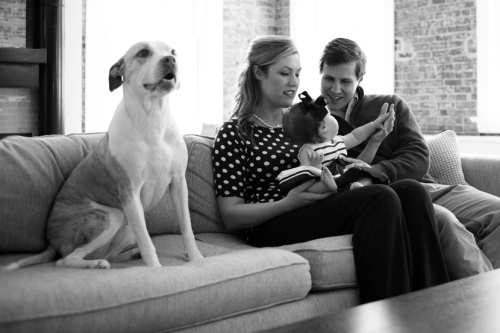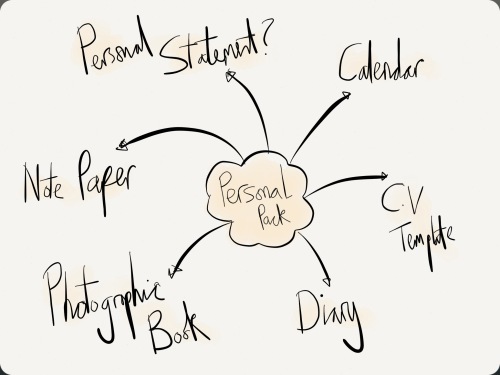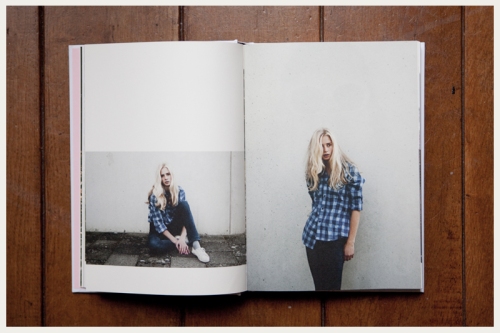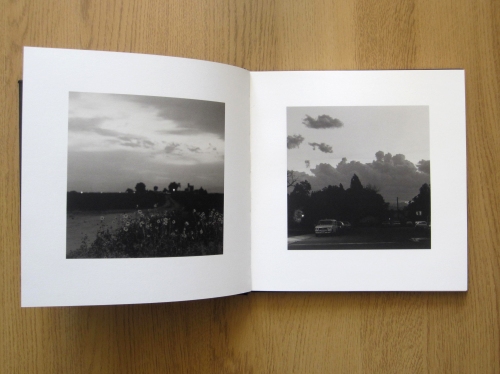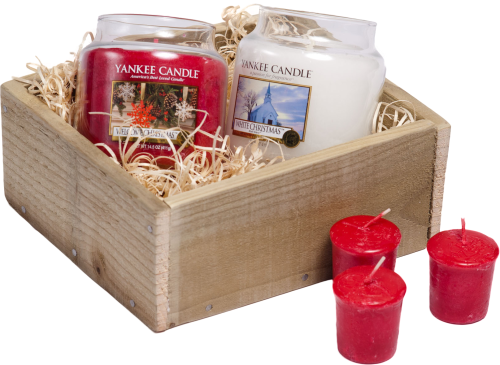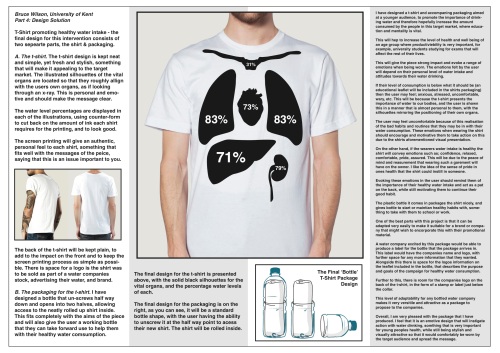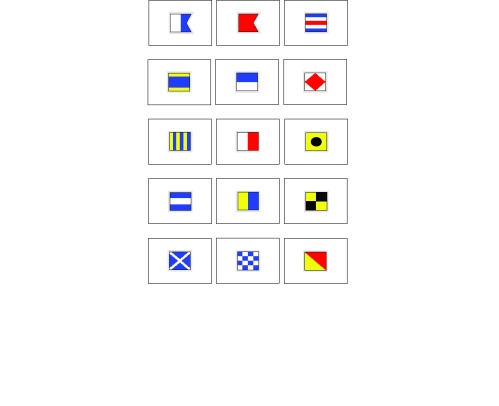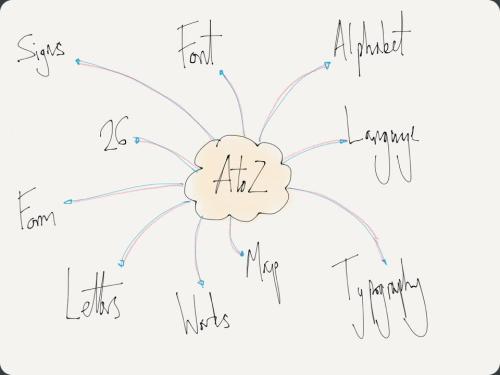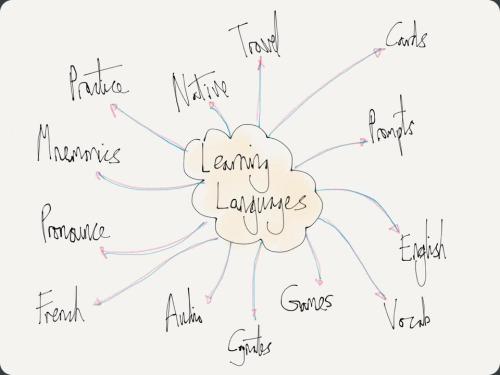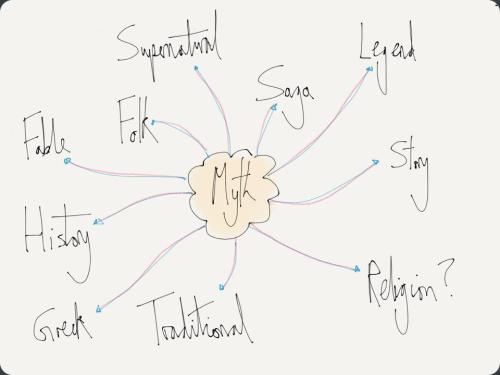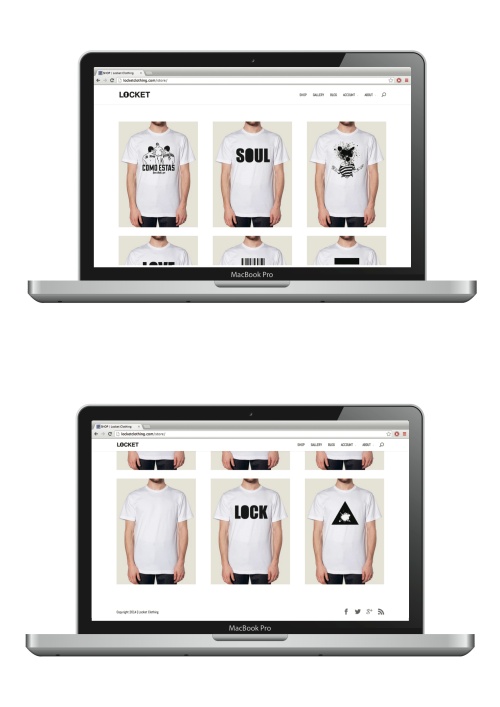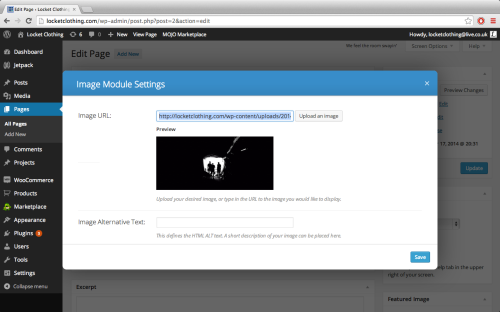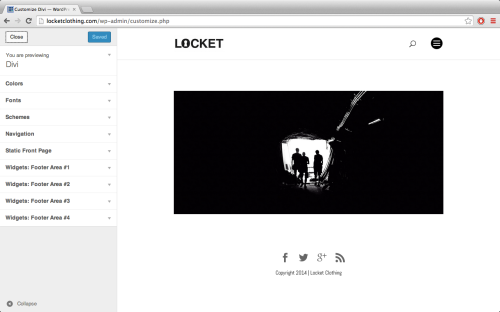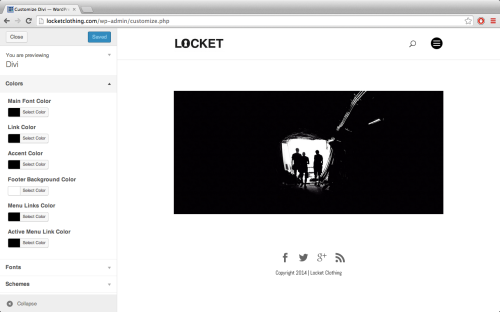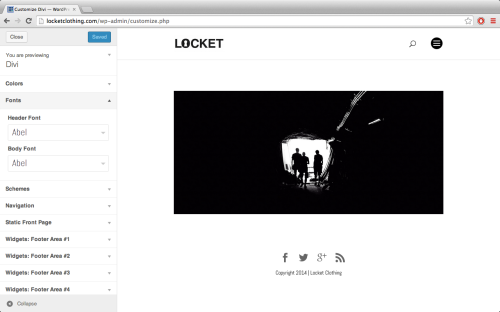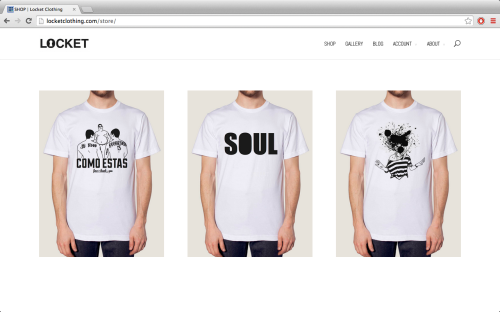Bruce Wilson
BA – Top Up
University of Kent
Dissertation
“How does the visual marketing for an Olympic games reflect the contemporary cultural identity of the host nation?”
It is hard to contemplate the scale and size of the stage that athletes find themselves on at an Olympic games. The wall of noise from the roar of the crowd, the pressure of the watching millions at home around the world, the weight of representing your home nation on the shoulders, the culmination of a lifetime of sacrifice and hard work all leading up to one Olympic games, one event, one moment.
With a sporting occasion of this magnitude it is clear to see why each aspect of the games is held in such importance. At the forefront is the visual marketing, with the logos and posters, that are the face of each games, advertising and promoting the event to the worlds media.
To explore how the Olympics become such a huge historic global event and why the marketing is so important, we head to ancient Greece, where the games were founded 3,000 years ago.
From the 8th century B.C. to the 4th century A.D., the games were held every four years in Olympia, located in the Western Peloponnese peninsula, by the city-state of Elis. The games were an integral part of a religious festival staged on the plains at that time, held in honor of the Zeus, King of the Gods.
Continuing for nearly 12 centuries, the Olympics become the most famous of all the games held throughout Greece at this time. Their influence in Olympia was so great that ancient historians began to measure time by the four-year increments in between the Olympic games, which were known as Olympiads.
[Encyclopaedia Britannica,. ‘Olympic Games’. N.p., 2014. Web. 29 Jan. 2015.]
After the Roman Empire conquered Greece in the mid-2nd century B.C., the Games continued, but their standards and quality declined. In 393 A.D. Emperor Theodosius I, a Christian, decreed that all such “pagan cults” be banned, and as a result the religious festivals were stopped, putting an end to the ancient Olympic tradition after nearly 12 centuries.
[Encyclopedia.com,. ‘Olympic Games Facts, Information, Pictures | Articles About Olympic Games’. N.p., 2015. Web. 29 Jan. 2015.]
Eventually, the games would rise again, after another 1,500 years, largely thanks to the work of Baron Pierre de Coubertin (1863-1937) of France. Dedicated to the promotion of physical education, the young baron became inspired by the idea of creating a modern Olympic Games, after visiting the ancient Olympic site. In 1894 he got the approval needed to found the International Olympic Committee (IOC), which would become the governing body of the modern Olympic Games.
[Cartwright, Mark. ‘Olympic Games’. Ancient History Encyclopedia. N.p., 2015. Web. 29 Jan. 2015.]
The first of these modern Olympics were held in Athens, Greece, in 1896. Since then the global sporting event has been held every four years and grown into the worlds foremost sporting competition, demonstrated by 10,568 athletes competing in 302 events in 26 sports at the most recent London 2012 Olympics.
[International Olympic Committee, London 2012 Facts & Figures. International Olympic Committee, 2012. Web. 29 Jan. 2015.]
Every Olympic games is supported by a whole host of visual marketing, for a number of purposes. The main role of the visual marketing being to promote and advertise the games, increasing interest, appeal. A successful marketing campaign behind the games could capture the attention of the public and the media of the world, and in turn increase the financial and political rewards that could follow. Politically, if the marketing is used as a piece of propaganda then the reward could be substantial from delivering a message on such a large scale, due to the audience and the scale of an Olympic game.
An Olympic games is a unique sporting event that captures the imagination of the majority of the world for the duration of the 17-day period it covers. The event is a unification of world’s best athletes and sports stars, coming together to compete. The power and prestige that an Olympic games has globally makes it the world’s foremost sporting competition.
Therefore the visual marketing and media material produced by the host nation plays a crucial role. What exactly is visual marketing? Visual marketing is the discipline studying the relationship between an object or event, the context it is placed in, and its relevant image. Representing a disciplinary link between economy, visual perception laws and cognitive psychology.
The specific pieces of visual marketing that have the most importance, are the posters and the Olympic logos attached to the games. Each Olympics, is held in a different host city, every four years, and a new logo and set of posters are produced for each. However, there is one logo that represents the games in its entirety that is constant throughout each and every games.
This iconic piece of visual marketing that is used by every modern Olympic games is the Olympic rings. The symbol was originally designed by the aforementioned Baron Pierre de Coubertin in 1912, co-founder of the modern Olympic games.
From a design point of view, the specifications for the Olympic flag Pierre de Coubertin wanted to design would have been very difficult. The logo needed to be universally accepted for all the nations involved in the games as well as ensure that it become part of the new Olympic tradition moving forward.
Above is the design that is still in use today. The five interlinking Olympic rings are multicoloured, with each colour representing the five continents where athletes travel from to take part in the sporting competition. The interlocking of the rings symbolize that the games are intended for all nations to be able to come and compete against one another in unity and harmony. This message is strongly political, asking for harmony between all nations, and with the global reach of the design, there is a very large audience that will be subjected to this message.
According to Coubertin, the colour of the rings stand for those colours that appeared on all the national flags that competed in the Olympic games at the time.
[The Olympic Museum,. The Olympic Symbols. 2007. Web. 29 Jan. 2015.]
Upon its initial introduction, Coubertin stated the following in the August, 1912 edition of Olympique magazine:
“…the six colours [including the flag’s white background] thus combined reproduce the colours of all the nations, with no exception. The blue and yellow of Sweden, the blue and white of Greece, the tri-colours of France, England and America, Germany, Belgium, Italy, Hungary, the yellow and red of Spain next to the novelties of Brazil or Australia, with old Japan and new China. Here is truly an international symbol.”
[Esham.io,. ‘The Olympic Colors Problem – Benjamin Esham’. N.p., 2012. Web. 29 Jan. 2015.]
The design of the Olympic flag was first made in 1914 but it was not flown at an Olympic games until 1920, when the games were held in Antwerp, Belgium.
The current view of the International Olympic Committee (IOC) is that the symbol “reinforces the idea” that the Olympic Movement is international and welcomes all countries of the world to join. As can be read in the Olympic charter, the Olympic symbol represents the union of the five regions of the world and the meeting of athletes from throughout the world at the Olympic Games. However, no continent is represented by any specific ring. Prior to 1951, the official handbook stated that each colour corresponded to a particular continent: blue for Europe, yellow for Asia, black for Africa, green for Australia and Oceania and red for the Americas, but his was removed because there was no evidence that Coubertin had intended it.
The flag is still flown at both the winter and summer Olympic events, as testament to success of the design and its longevity, an iconic piece of work that represents everything that is good about the Olympic spirit and the nature of the event.
There are clear political propagandist ideas and influences to the design, with ‘unity’ being the main message of the work. The propaganda being of peace and good will, reinforcing the view that the event is a culmination of both these things.
After evaluating the influences behind the design of the primary Olympic rings logo, the next stage will be to explore the logos and posters representing various specific Olympic games. This will produce more evidence on how the cultural and political influences affect their designs.
Looking at specific case studies, the dates of which have been chosen carefully to also explore the changing role of the artist within the visual marketing, throughout the modern Olympic era, will determine how the visual marketing reflects the cultural identity of the host nation.
Berlin 1936 Olympics –
The 10th occurrence of the modern Olympic games was held in Berlin, in 1936, from August 1-16th.
[Olympic.org,. ‘1936 Olympics – Summer Olympic Games | Berlin 1936’. N.p., 2015. Web. 29 Jan. 2015.]
These Olympic games were held in a tense, politically charged atmosphere. The Nazi party had risen to power in 1933, two years after Berlin was awarded the games, and its fascist policies led to international debate about a boycott of the games.
Fearing a mass boycott, the international Olympic committee pressured the German government and received assurances that qualified Jewish athletes would be part of the German team and that the games would not be used as a platform to promote Nazi ideology.
However, the government, headed by Adolf Hitler, routinely failed to deliver on such promises. There was only one athlete of Jewish descent present in the German team, pamphlets and speeches about the natural superiority of the Aryan race were commonplace, and the Reich sports field, a newly constructed sports complex that covered 325 acres and included four stadiums, was draped in Nazi banners and symbols.
[Ushmm.org,. ‘The Nazi Olympics Berlin 1936’. N.p., 2015. Web. 29 Jan. 2015.]
The games was the perfect opportunity for the Nazi party to prove to the world the reality of the master race over various sporting disciplines, as 49 countries were competing bringing with them their assorted media. Nearly, 4,000 athletes competed in 129 events.
It was also the 1936 Berlin Olympics that introduced the torch relay, where the Olympic flame was transported from Greece.
Along with the worlds media the berlin Olympics featured advancements in the coverage it received. It was the first Olympic competition to use telex transmissions of results, and zeppelins were used to quickly transport newsreel footage to other European cities. The games were televised for the first time, transmitted by closed circuit to specially equipped theatres in berlin.
[Historyplace.com,. ‘The History Place – Triumph Of Hitler: The Berlin Olympics’. N.p., 2015. Web. 29 Jan. 2015.]
The extended reach of the media, with coverage like never before, further added to the power of the propaganda and visual marketing throughout the world, making the design of the posters and the logo perhaps more prominent and important than ever before.
Researching the logo for this Olympic games is fascinating due to the political background surrounding the games. The next stage is to explore the affect this has had on the final design, or how the design fits the context.
The logo was created purely by chance, a German painter and graphic artist, Johannes Boehland, who started by designing an emblem containing the five Olympic rings with a superimposed eagle and the Brandenburg Gate, one of the symbols of the city. However, the President of the Games organizing committee, Dr Lewald, was not satisfied with this composition and took the initiative to open the bottom part of the emblem, which turned the design into a bell. Although it was purely by chance that it was created, the symbolism of the figure was immediately recognized.
[Olympic.org,. ‘1936 Olympics – Summer Olympic Games | Berlin 1936 – Emblem’. N.p., 2015. Web. 29 Jan. 2015.]
On the side of the bell is the inscription “Ich rufe die jugend der welt!” (I call the youth of the world). The artist Johannes Boehland, was commissioned to continue designing the emblem on this theme. The definitive emblem was thus composed of the Olympic bell of which can be found the Olympic rings with the German eagle superimposed. As well as the Olympic rings, flame and oath, the bell became one of the strong and omnipresent symbols of the Berlin games.
Visually the logo is very striking, due it its simplicity, and now the Nazi connotations are clear and powerful, almost haunting. The colour being absent from the rings feels cold and harsh, giving a feeling of moving away from the inclusive, bringing people together message that colours were intended to have. There is no element of fun or joy, nothing that represents the celebration of a global sporting event, nothing relating to sporting triumph or the pushing of the human body for physical prowess or superiority.
The feelings that come across are of power, and control, but not in a sporting sense, more of political undertones, with the bell representing a call to arms, a far cry from Olympic logos of more recent times.
It is clear to see the influence that the cultural and political background of the time has had on the design for this logo, with the role of the artist being one that is somewhat limited in terms of expression or artistic and creative freedom. This tends to suggest that the artist is used for their skills to present a certain message or propaganda, as dictated by the government and those in power, rather than be given the freedom to express themselves individually.
The best way to compare and contrast the changing role of the artist is to look at the Berlin logo next to the logo for another German Olympic games, this time held in Munich 1972.
Munich 1972 Olympics –
Munich won its Olympic bid on April 26, 1966, at the 64th IOC session in Rome, Italy, over bids presented by Detroit, Madrid and Montreal.
The 1972 summer Olympics, officially known as the games of the XX Olympiad, was held in Munich, West Germany, from August 26 to September 11, 1972.
[Olympic.org,. ‘1972 Olympics – Summer Olympic Games | Munich 1972’. N.p., 2015. Web. 29 Jan. 2015.]
The sporting nature of the event was largely overshadowed by the Munich massacre in which eleven Israeli athletes and coaches, a West German police officer, and five Black September terrorists were killed.
The 1972 Olympics were the second games to be held in Germany, after the 1936 games in Berlin, which took place under the Nazi regime. The West German government, mindful of the connection, was eager to take the opportunity of the Munich Olympics to present a new, democratic and optimistic Germany to the world.
[TIME.com,. ‘Munich Massacre: Photos From The Terror Attack At The 1972 Olympics | LIFE | TIME.Com’. N.p., 2015. Web. 29 Jan. 2015]
This was most clearly demonstrated by the official motto for the games, “die heiteren spiele”, or “the happy games”. This again shows the social and political opportunities presented by hosting a games to German or whoever the host national may be. With various avenues for a governments propaganda to be put across to their people and the worlds media.
The Olympic park is based on Frei Otto’s plans and after the games became a Munich Landmark. The competition sites, designed by architect Gunther behnisch, included the Olympic swimming hall, the Olympics hall and the Olympic stadium, and an Olympic village very close to the park. The design of the stadium was considered revolutionary, with sweeping canopies of acrylic glass stabilized by metal ropes, used on such a large scale for the first time. However, this time the venues were not draped with Nazi banners, symbols and other propaganda.
Once again the Olympic games required a logo and in Otl Aicher, West Germany had one of the most prominent graphic designers of the 20th century. Aicher, born 13th May 1922, in Ulm, Germany, was appointed lead designer for the Munich games.
[Aicher-otl.com,. ‘Otl Aicher Biography – Infos – Art Market’. N.p., 2015. Web. 29 Jan. 2015.]
As well as graphic design Aicher was an educator and author, renowned for his structural visual systems and typography. In 1948 he started his own design studio in his hometown of Ulm, in1953, along with Inge Scholl and Max Bill, he founded the Ulm School of Design. (Hochschule für Gestaltung).
Iconic visual identities from the school include Braun and Lufthansa, which gives some background to the work they produced previously. It was in the early 1970’s that he led the team to produce the designs for the Munich Olympics.
Aicher, designer and director of the visual conception commission, thought logo for the games was a blue solar logo, the “bright sun”. Representing a crown of rays of light, a design symbolizing the sprit of the Munich games – light, freshness, generosity, expressed by the design ‘radiant Munich’. Otl Aichers project was chosen in spite of a competition whose 2,332 entries were deemed unsatisfactory.
The spiral design with striking black & white and the connotations of sunrays, was not warmly accepted by the public when first presented. Common criticisms were that the logo does not relate to sport and the drive for sporting prowess and greatness. There are no Olympic rings present on the logo and no obvious relevance to Munich, the Olympics or Germany.
[1972municholympics.co.uk,. ‘Otl Aicher 1972 Munich Olympics – Biography’. N.p., 2015. Web. 29 Jan. 2015.]
There may be an element of suggested grace and movement but the logo lacks specific human athleticism, endeavor or inspiration.
With the simple black & white, not the five colours of the Olympic flag, the logo combines fractural, trippy psychedelic style prevalent at the time but also calls in heritage from the modernism, futurism and vortisim, not to forget the aforementioned Bauhaus.
Whilst remaining very German in character, the logo – in these dynamic artistic styles takes inspiration from all around Europe producing an overtly internationalist feel, suggesting that the logo could hint at the turbulent state of flux that West Germany was in at the time.
[Tate,. ‘Bridget Riley, ‘Nataraja’ 1993′. N.p., 2015. Web. 29 Jan. 2015.]
Visually the piece is very comparable in its very distinctive style to the work of Bridget Riley. Riley was born in 1931 at Norwood, London, with her childhood spent in Cornwall and Lincolnshire. She studied at Goldsmiths’ College from 1949 to 1952, and at the Royal College of Art from 1952 to 1955. Riley began painting figure subjects in a semi-impressionist manner, changing to pointillism around 1958, mainly producing landscapes.
In 1960 she evolved a style in which she explored the dynamic potentialities of optical phenomena. These so-called ‘Op-Art’ pieces, working only in black and white and using simple geometric shapes – squares, lines and ovals. Although she investigated many areas of perception, her work, with its emphasis on optical effects was never intended to be an end in itself. It was instinctive, not based on theory but guided by what she saw with her own eyes. Op-art works such as Fall, 1963, produce a disorienting physical effect on the eye.
[Op-art.co.uk,. ‘Bridget Riley | Op-Art.Co.Uk | Op-Art.Co.Uk’. N.p., 2015. Web. 29 Jan. 2015.]
The Olympic logo reflects a lot of traits from artistic movements at that time, as the similarities with Bridget Riley’s work displays.
The logo feels as though there was a brief of key words and an overall message that the government wanted to achieve, with the artist being given more scope for freedom and independence within these boundaries.
Creating something fresh, light, radiant, but having the firm stamp of an artist’s individuality over it. This is very unlike the work for the 1936 Olympic logo where the role of the artist when it came to personal expression was extremely limited.
This contrast shows the changing attitudes towards the role of the artist in society, with scope for that freedom of expression coming into the work, with an overall message from the governing bodies underpinning the piece.
Cultural identity is another key issue that comes into the design of Olympic visual marketing, with such a potentially unifying piece of design a great opportunity to bring people together. Cultural identity is the identity or feeling of belonging to, as part of the self-conception and self-perception to nationality, or even ethnicity, religion, social call and any kind of social group that have its own distinct culture.
“Cultural identity is similar to and overlaps with, identity. The definition being, groups or individuals (by themselves or others) in terms of cultural or subcultural categories (including ethnicity, nationality, language, religion, and gender). In stereotyping, this is framed in terms of difference or otherness.”
Another example of an Olympic host nation where the games has been held more than once is London. Exploring these games will give more evidence into the changing role of the artist and whether political and cultural movements have affected the logo designs. Starting with the 1948 Olympics:
Officially known as the games of the XIV Olympiad, the 1948 summer Olympics, were held in London, England. Held after a 12-year hiatus because of world war 11, these were the first summer Olympics since the 1936 games in Berlin. This was the second occasion that London has hosted the Olympic games, having previously been the venue in 1908.
This was a very interesting time for the Olympics to be held, both culturally and politically. The event came to be known as the austerity games, because of the economic climate and post-war rationing. Due to this, no new venues were built for the games, and athletes were housed in existing accommodation instead of an Olympic village, as they were the 1936-berlin games and the subsequent 1952 games. A record 59 nations were represented by 4,104 athletes over 19 sporting disciplines, again this demonstrates the global reach of the event. This Olympic games was the first to be broadcast on television.
[Olympic.org,. ‘London 1948 Summer Olympics | Olympic Videos, Photos, News’. N.p., 2015. Web. 29 Jan. 2015.]
Germany and Japan were refused permission to participate due to the difficult relationships between the nations post-war, the USSR were invited but chose not to send any athletes.
The Olympic games had not been held in either 1940 or 1944 due to world war 11, and London was called upon at short notice to host them. Despite shortages of essential products due to the rationing, the city rose magnificently to the challenge, a true victory for the austerity games over dark times for the nation.
The logo for the Olympic games is composed of the clock tower of the houses of parliament. The hands of the famous “big ben” are pointing to 4 o’clock, the time at which the opening of the games was planned. In the foreground, the Olympic rings. The games organizing committee wanted a typically English emblem, but one that would have significance not only for the generation of that time, but for future generations as well.
The Olympics returned once again to London in 2012, making it the only city to host the games three times.
The London 2012 games were centered around the Olympic park in East London, which is the site of a number of new sports venues. Up to 180,000 spectators a day entered the park to enjoy the games, making it the principal focus of Olympic activity.
The main venues – the Olympic stadium, aquatics centre, velodrome and BMX circuit, as well as the hockey, handball and basketball arenas – were easily accessible through a network of footbridges and walkways within the park.
The Olympic Village was within walking distance of all the venues in the Park, enhancing the experience for athletes and officials. The use of other prestigious venues – such as Wembley Stadium for football, the All-England Club in Wimbledon for tennis, Lord’s Cricket Ground for archery and Horse Guards Parade for beach volleyball – was also a feature of the London 2012 Olympic and Paralympic Games.
The London 2012 Games included a four-year Cultural Olympiad. It reached a climax with the Olympic Games Opening Ceremony on 27 July 2012, starting a 60-day festival of sport and culture across the UK, as the Olympic and Paralympic spirit crosses the world once again.
Wolff Olins developed the London 2012 logo in 2007, for a controversial fee of £400,000.
Wolff Olins is a brand consultancy, based in London, New York, Dubai and San Francisco. Founded in 1965, it now employs 150 designers, strategists and account managers, and has been part of the Omnicom group since 2001.
[Archive.wolffolins.com,. ‘London 2012 – Wolff Olins’. N.p., 2012. Web. 29 Jan. 2015.]
The company specializes in creating positive social impact for clients, developing brand experiences, creatively led business strategies, and visual identity systems and has worked in sectors including technology, culture, retail, energy & utilities and media.
“We don’t do bland. This is not a bland city. We weren’t going to come to you with a dull or dry corporate logo that will appear on a polo shirt and we’re all gardening in it, in a year’s time.” So said Sebastian Coe in a bid to stem the tide of criticism when the Wolff Olins Olympic logo was launched in 2007. What was extraordinary was not the level of criticism from within the design community but the fury of the press as columnists queued up to rage against the LOCOG machine
“It is unconventionally bold, deliberately spirited and unexpectedly dissonant, echoing London’s qualities of a modern, edgy city,” reads their website. “Containing neither sporting images nor pictures of London landmarks, the emblem shows that the Games are more than London, more than sport…The emblem is designed to be populated, to contain in fills and images, so it is recognizable enough for everyone to feel and be part of London 2012.”
“This is a truly innovative brand logo that graphically captures the essence of the London 2012 Olympic games.” Jacques Rogge, International Olympic Committee President.
[News.bbc.co.uk,. ‘BBC NEWS | UK | Magazine | ‘Oh No’ Logo’. N.p., 2015. Web. 29 Jan. 2015.]
However skeptics have remained – Alice Rawsthorn in the ‘New York Times’ called it “the graphic equivalent of… dad dancing”
“The logo fails the Olympics spirit completely. Its component parts are broken apart, while the Olympics are all about athletes, spectators and nations joining together.” Jonathan Glancey
Another crucial piece of visual marketing for any Olympic games is the poster or posters produced. The posters
This is the poster for the 1948 London Olympics.
The connotations of this work are very clear and defined, in the time of austerity after the war, this poster is a unification of the coming together of the nation through tough times. This work is a very clear continuation of the themes presented in the logo.
The houses of parliament are still present with the rings sat in front of them, in the most prominent position.
Colour has been used to help achieve the specifications of the poster, in making it more eye catching and visually appealing than a black and white alternative may have been. The five colours help to show the bringing together of the worlds countries, although Germany and japan were excluded from the competition.
There is a certain power and presence, national pride represented by the houses of parliament. Much like the logo, the governments overriding message is unity and strength though difficult times.
[Encyclopedia Britannica,. ‘London 1948 Olympic Games’. N.p., 2014. Web. 29 Jan. 2015.]
The statue of a discus-throwing athlete brings in the sporting themes to the poster, an icon of physical strength and power, something that is of course extremely important at any Olympic games.
The blue shows the sky above the houses of parliament, perhaps representing that a bright future lies ahead, that better times are coming to the country.
The blue fades out and the bottom of the poster is left clear to highlight the information, the location of the games, and the year and date in which the games is held.
As with the logo for this Olympic games the role of the artist is very limited, there is next to no individual artistic expression. The economic and post-war political landscape in the United Kingdom at the time meant that the message of the logo and the poster was very important. Due to this being the first games to be held since the war. The logo and the poster for an Olympic games is a unique platform for a nations government to put across their propaganda to the worlds media.
The visual marketing works for the 2012 Olympics are a move away from the very specific, stringent, design briefs that artists from pervious Olympics had to follow. The artwork is more about the artist or designer with a strong emphasis being on their individual creative skill and imagination within the umbrella of a wider theme that is trying to be achieved.
“A selection of renowned artists were commissioned to produce a series of posters for the Olympic games.
Posters for next year’s Olympics and Paralympics will be designed by top British artists including Howard Hodgkin, Bridget Riley, Tracey Emin and Chris Ofili, it was announced.
The 12 commissioned artists were named to coincide with the one-year countdown to next year’s London 2012 festival – part of the Cultural Olympiad celebrations.
Among those on the panel that whittled more than 100 names from the art world down to 12 was the Tate’s director, Sir Nicholas Serota, who predicted “colour, vitality, energy and diversity” in the 2012 posters that will be seen all over the capital next year.
Six male and six female artists have been chosen. The others asked to create a piece were Fiona Banner, Michael Craig-Martin, Martin Creed, Anthea Hamilton, Gary Hume, Sarah Morris, Bob and Roberta Smith and Rachel Whiteread.”
[Brown, Mark. ‘Top British Artists To Design 2012 Olympics Posters’. the Guardian. N.p., 2011. Web. 29 Jan. 2015.]
Looking at an example of the posters commissioned for the London games will give a good insight into the relationship between the movements and political landscape at the time and the artwork produced, and as to whether this had any impact on the design or the role of the artist in producing it.
Tracey Emin, (born 3 July 1963) is an English artist, who emerged in the 1980s, during the “Young British Artists” movement. She is noted for her provocative and controversial pieces, including “Everyone I Have Ever Slept With 1963-1995”, “My Bed” and “The Last Thing I Said To You Is Don’t Leave Me Here”
Emin was inducted into the Royal Academy of Arts in London, and in 2011, one year before the London Olympic games, she was appointed as a professor of drawing, demonstrating the power and prestige that she is held in amongst the art community.
Her pedigree is clear, and she will have been commissioned to create something in her style with a very limited brief, to allow her own creativity and unique style to come through. Creating an artwork that is abstract and not dictated to by the governing body at the time. Holding back an artist of this standing with stringent design restrictions would have been wrong, and was something that has been avoided by the British government and their Olympic team.
[Emin, Tracey. ‘Biography – Tracey Emin Studio’. Traceyeminstudio.com. N.p., 2015. Web. 29 Jan. 2015.]
Emin said she was please but surprised to be asked. “The posters are intrinsic to the Olympics, they are the things that are going to stay around,” she added.
She had been sent a book of posters from previous games, she said, but was unlikely to take inspiration from the designs.
“A lot of them are about values which aren’t so important now,” she said. “I’m interested in the party side – the celebration.”
It is interesting that Emin has identified the cultural shift in the values presented by posters for previous games, this is more evidence to support the theory that over time the role of the visual marketing has become less of a platform for propaganda.
Although there is an interesting debate to had as to whether giving the artist a looser brief and allowing more individuality in their work, that this is in fact propaganda in itself. Not propaganda of a specific political nature, but more presenting London and Great Britain as a place that
The official line on her final work:
“Always at the centre of her own world, Tracey Emin shares life, beliefs and feelings through her work with compassion and wit. Emin took the Paralympic values of inspiration and determination as the starting point for her print and created what she describes as a ‘love letter’.
Two small birds, delicately perched on branches, appear to kiss beneath the words ‘you inspire me with your determination and I love you’.
The ‘agitos’ floats below them like feathers or leaves falling from the tree. Birds have frequently appeared in Emin’s drawings to symbolise freedom and strength, whilst her use of handwritten text expresses personal thoughts and emotions.
Her print is a charming and tender tribute to the Paralympic games and athletes.”
[Telegraph.co.uk,. ‘The London 2012 Olympics And Paralympics Posters: In Pictures – Telegraph’. N.p., 2015. Web. 29 Jan. 2015.]
A design of such an abstract nature with its gentle motivational message is far from the strong powerful political undertones conveyed in the poster for the 1948 games in London. With both posters being London centric the comparisons are stark and the role the artist has in the piece is dramatically different. This would suggest that because of the much more settled political landscape at the time of the London 2012 Olympics, that the piece was able to be used for a personal expression, celebrating one of the countries best artists, and therefor the work and the influential people that the united kingdom can produce.
Another example of one of the series of posters commissioned for the games is this work by Howard Hodgkin – swimming.
Howard Hodgkin (born 1932) is an English painter, printmaker and collector. His preference was for emotionally charged figurative groupings in which the figures appeared embedded in the matrix of the picture. The often-manic humor helped place Hodgkin in the climate of pop art, although he was not directly associated with the movement.
Having been commissioned by Andy Warhol to produce a poster for the 1984 Sarajevo Games, Hodgkin is the only one of the 12 artists who has experience in this area.
[Tate,. ‘Howard Hodgkin, ‘Rain’ 1984-9′. N.p., 2015. Web. 29 Jan. 2015.]
Hodgkin said he had a pragmatic reason for agreeing to the Olympic commission. “I said yes because I thought it would be nice for a lot of people to see my work,” His enthusiasm for the games was also rather more toned down than some, as he admitted looking for to it “only in so far as there’ll be something else to see on the telly”.
[Brown, Mark. ‘Top British Artists To Design 2012 Olympics Posters’. the Guardian. N.p., 2011. Web. 29 Jan. 2015.]
Hodgkin describes his paintings as representational pictures of emotional situations.
For his Olympic print he created swimming – a deep, swirling mass of blue flooding across the page. In the darkest area of colour the outline of a figure can be made out as if pushing off after a tumble turn. The fluidity of the brushstroke perfectly captures the movement of water and the sensation of swimming.
This is another excellent example of the artist’s personality and character coming through in the work, there is no political or propagandist motives behind the piece, just a beautiful piece of expressionist work that captures the essence of the event it aims to promote.
A more cultural approach is taken; with the works being a more cultural take on the state of the nation, rather than a strictly political one. Conveying a message of cultural, expression, freedom and exciting vibrancy. Ultimately this will be a political choice to take this stance and specifications from the visual marketing, but the relatively quieter political landscape at the time put the governing bodies in the position to make this design decision. At the time of the 1948 games the decision will have been made that there simply was no alternative but to use the reach of the visual marketing to present a strong unifying message to the people of the nation, and the worlds media.
To explore whether this hypothesis, that the role of the artist was bigger and freer due to the quieter political background and landscape at the time, not just the growing movement towards art being about freedom of expression, looking at the posters for two German Olympics will be telling.
This poster is for the 1936 berlin Olympic games. Produced by Dresden artist, Willy Petzold, whose design, an antique bronze head bearing a wreath of victory signifies strength and power, and the strive for sporting prowess. Clear comparisons with the Aryan male that the Nazi party campaigned for are clear due to the fascist movement at the time.
[Olympic.org,. ‘1936 Olympics – Summer Olympic Games | Berlin – Poster 1936’. N.p., 2015. Web. 29 Jan. 2015.]
The statue of the black chariot depicted, is the Brandenburg Gate, which is the only remaining town gate in Berlin, Germany, standing at the western end of the avenue Unter den Linden. It has served as a symbol of both division of Germany and the country’s reunification and today is one of Berlin’s most visited landmarks.
The gate was commissioned by Frederick William II as an entrance to Unter den Linden leading to the Prussian palace. Built in 1788-91 by Carl G. Langhans after the model of the Propylaea in Athens. These ties back to Athens, that home of the modern Olympic Games, made the inclusion of the Brandenburg Gate very appropriate. The gate was used extensively in Nazi propaganda, and a parade was held there on the Adolf Hitler’s ascent to power in 1933.
The propagandist message is very clear with this poster, and the fact that the symbol previously used by the Nazi party to represent German strength and unity is the most prominent aspect of the poster reflects this. The design is very heavily influenced by the political landscape with this poster being a clear example of political propaganda over an artist’s individual creativity.
[Berlin.de,. ‘Brandenburger Tor – Berlin.De’. N.p., 2015. Web. 29 Jan. 2015.]
Comparing and contrasting this poster with a poster from the 1972 Olympics, held in Munich, will allow any changes in the representation of the cultural identity of the national or the role of the artist to be clearly visible.
This is one of a selection of posters produced for the Munich Olympics. Designed by Otl Aicher, designer and director of the visual conception commission for the games. Aicher being a pioneer of graphic design during the 20th Century and creator of the visual identity for the 1972 Munich Olympics has his stamp of identity across all of the visual marketing for the games.
The colour blocking with soft secondary shades layered on top of each other with sparse text is a winning combination. It’s clean, neat, very simple and sophisticated.
This piece is represented of the selection of posters produced by Aicher and his design team. There are strong similarities with the London Olympic posters here. The poster for the 2012 games was a move away from a specific piece of propaganda and more of a statement on the vibrancy and culture of London and the United Kingdom as a host city. This approach to the visual marketing is present with the work for the 1972 Munich Olympics, with the work presenting a move away from the dark shadow cast by the previous games held in Germany and the political events that followed with the Second World War.
[1972municholympics.co.uk,. ‘Otl Aicher 1972 Munich Olympics – Posters – Sports Series’. N.p., 2015. Web. 29 Jan. 2015.]
The work presents a fresh, exciting Germany, looking to the future, with a desire to move away from the dark past that preceded these games. The designs used reflect the cultural identity of Germany and its people with these messages coming strongly through the work.
The role of Otl Aicher, and the artist in general is much greater with this work, expressing the nations changing attitude towards freedom of expression through art and visual platforms. The political landscape being much more settled at the time of this Olympics allowed the governing bodies to make these design decisions, and gave them the opportunity to present a new Germany to the worlds media, without the need for a specific political piece of propaganda.
In summary, political and cultural movements have a huge influence on an Olympics’ visual marketing, and this has affected some of the most iconic logos and posters that the Olympic games have ever seen. There is clear evidence to see that over the course of time, the prominence of the artist growing and the growing role given to them, allowing their individuality and unique artistic talent to come through.
The visual marketing reflects the contemporary cultural identity of the host nation through the messages and artistic choices that are made, as the governing bodies of the host nation dictates these. There is strong evidence to suggest that political landscapes and large political issues, at times of great importance, such as fascist Germany in 1936 or post war Brittan in 1948, affect the design for the visual marketing most dramatically.
At these pivotal times, it is clear that strong dictation has been used by the host national to deliver a clear message and work of propaganda for the governing body, using the global reach of the design to speak to their people and the worlds media.
There is a stark contrast from the designs and pieces produced at these times, to those produced at more settled time politically, such as in London in 2012. When a more creative, artist approach was used to the logo and the posters.
This is most clear to see with the London logo itself, as the design was outsourced to Wolff Olins, where an edgy, interesting and ultimately iconic design was produced by working to an apparently limited design brief, with no overtly propagandist message attached, such as “I call the youth of the world” in the 1936 Berlin logo. The posters for the 2012 games are used as an exhibition of some of the most talented British artists allowing them to express themselves and their own personal emotions and thoughts about the games, as well as the United Kingdom as a host nation.
[Olympic.org,. ‘1936 Olympics – Summer Olympic Games | Berlin 1936’. N.p., 2015. Web. 29 Jan. 2015.]
This is evidence demonstrating how the role of the artist is used to reflect the contemporary cultural identity of the host nation, with a greater scope for individuality, expression and experimentation at times of lessened political tension or hardship, for example. This is the clearest representation of how the political and cultural movements at the time affect the designs for the visual marketing for an Olympic games.
The design decisions for the visual marketing ultimately come from the governing body of the host nation, therefore the conclusions that have to be made are that times of lessened political tension or difficulty allow the governing bodies to be more creative and experimental with the design briefs.
This combined with the growing role of the artist as an individual and the movement towards freedom of expression through art over the years culminate in a clear correlation between the year the games is held in and the role of the artist in reflecting the contemporary cultural identity of the host nation they have been commissioned to produce artwork and pieces of design for.
Depending on the political landscape at the time the visual marketing reflects the cultural identity through a strong propagandist message and piece of design targeting the global reach of the work, or a move towards a more creative, experimental piece of design. Although it will have propagandist undertones, such as presenting the host nation in a way that the governing body would like the worlds media to see them, the visual marketing is offering a view on the host nation through an artists or designers individualistic approach, rather than a specific political statement.

